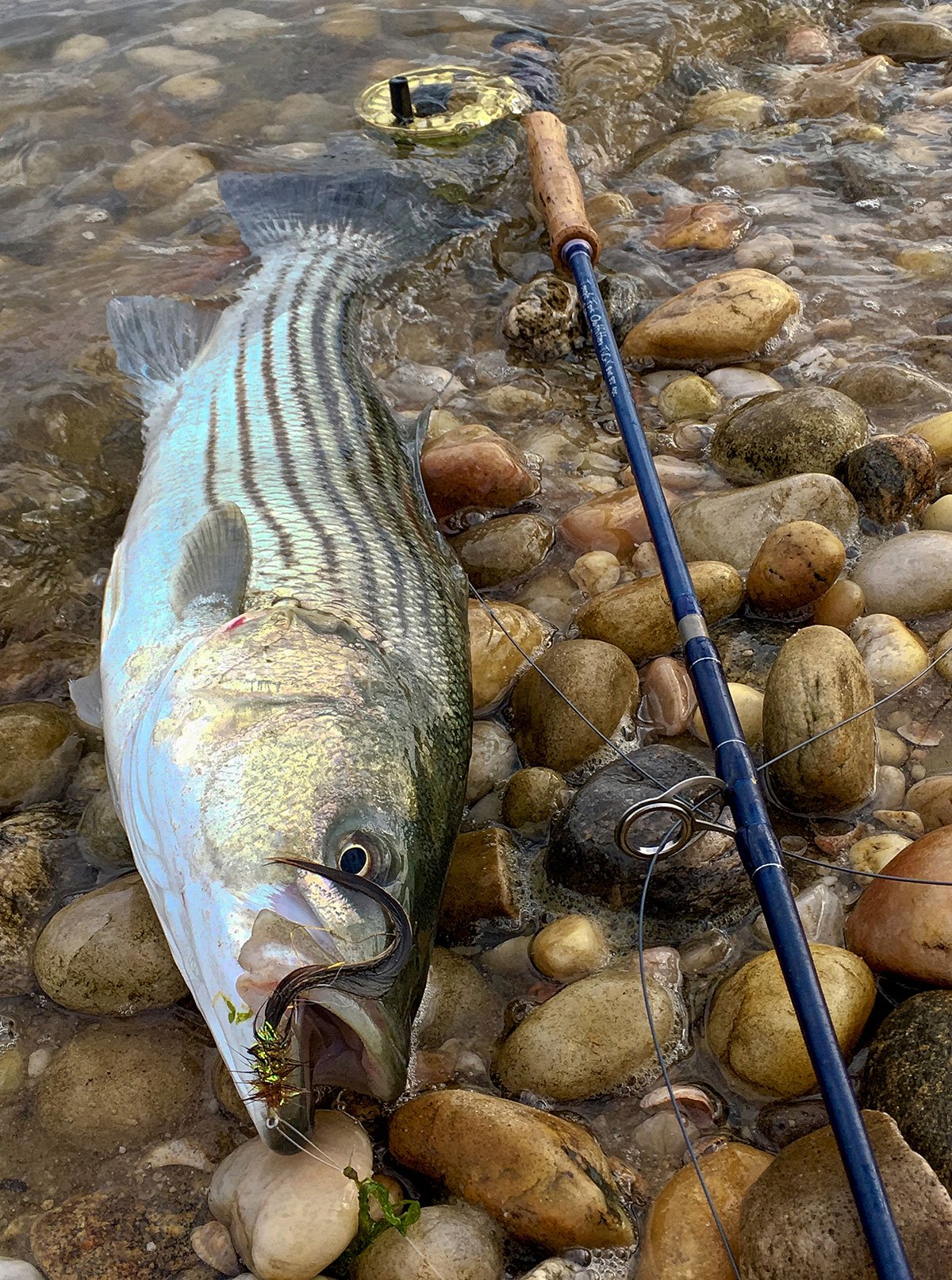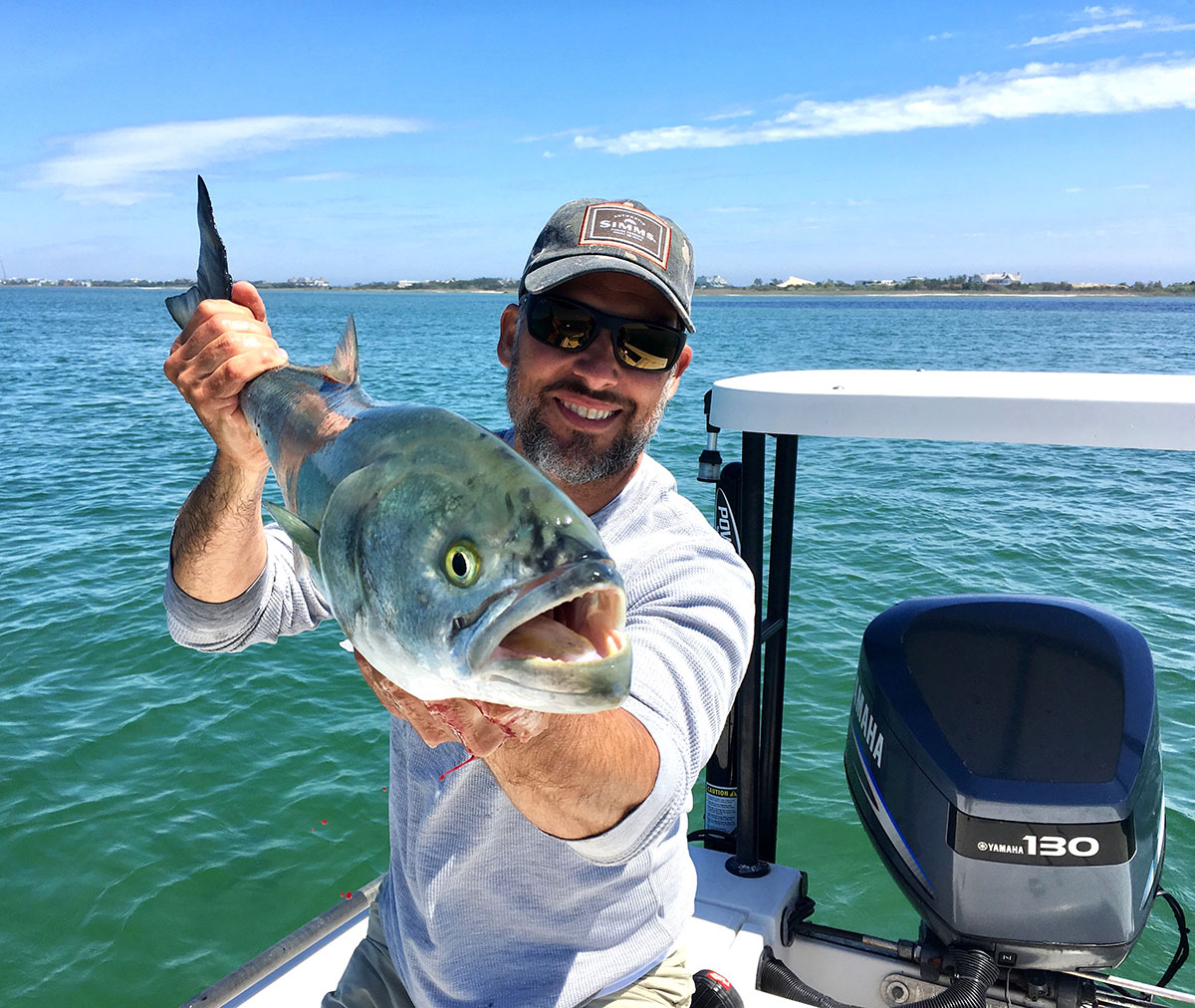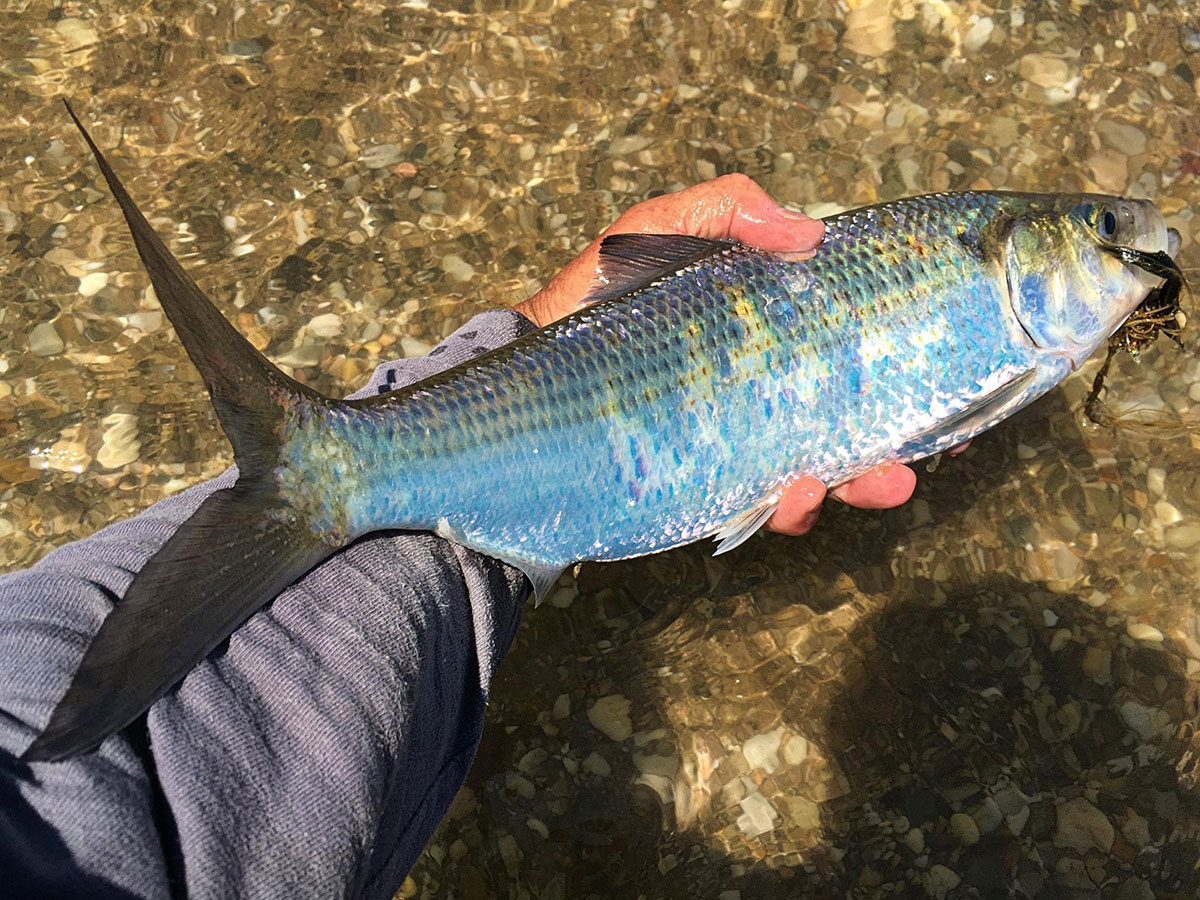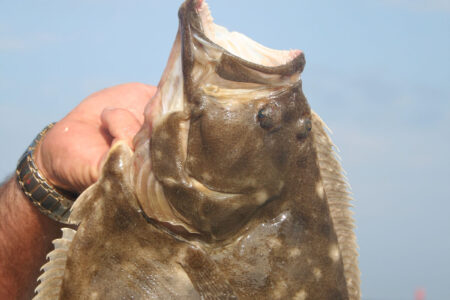
Seek out the back bays spots this spring for that first fish.
Contained within a collection of early English proverbs dating to 1670 is an adage that reads: “The early bird catcheth the worm.” The implied meaning in the proverb is that one should be swift in seizing opportunities and that success comes to those who are prepared to act first. Similar comparisons can be made to fishing, especially as a new season dawns. Anglers who understand the dynamics at play between water temperature, baitfish movements, and predatory fish behavior are the ones who enjoy the most consistent early season success throughout the coastal waters of Long Island, and especially the Long Island Sound.
Early Season Haunts
Predatory sport fish follow their food sources or seek out areas where prey is most active and abundant. That is precisely why early-season striped bass will roam the back bays and harbors during the beginning days and weeks of spring. It is there in those protected waters that they have the opportunity to find food. If you are able to explore the shallow water of harbors and bays immediately after the “winter thaw,” you will witness a most intriguing progression of life reborn. If the winters are mild and spring arrives with no attendant and lingering cold fronts, one will typically begin to see signs of diminutive baitfish sometime in early April. As winds shift from north and east to the now prevailing south and west, a perennial revival begins.
Very often, the more westerly harbors of the Sound and the beaches and bays of the south shore will also see an early presence of menhaden pods as they, too, make their initial arrival around Long Island. But for the central and eastern harbors of the Sound, the arrival of that most favored big bass bunker will be delayed until the latter part of April and early May. As the season advances, both bait and game fish will infiltrate Long Island bays and harbors literally from all directions. The same chain of events also takes place along the South Shore of Long Island. Fish, especially striped bass and bluefish, will migrate east along the southern coastline of Long Island as well. Those early migrants will seek out the warmer and shallower backbay areas like Jamaica Bay, Little Neck Bay, Moriches, and Shinnecock Bays. On the North Shore of Long Island, the harbors and bays situated inshore off the open Sound are where the early bird spring anglers will find fish. Remember, too, that some populations of striped are “home-bodies” that remained locally throughout the winter months and did not migrate. While those are typically smaller, school-size fish, they, nonetheless, make for very welcomed early-season targets of opportunity, especially from within the deeper harbors of Long Island. It is well known that across the Sound in the waters of the Connecticut River, a large population of bass holdovers throughout the winter months. It is also highly likely that some of those fish will find their way to the shorelines of Long Island’s North Shore as they exit those rivers in the early spring.
Early Season Baits
During those first weeks of spring, you will see a variety of small minnow-type baitfish become ever more active as the waters warm: killies and chubs, spearing, small eels, grass shrimp, and other crustaceans, as well as a wide assortment of crabs: fiddler, blue, green, mud, calico and even the omnipresent and invasive Asian crab. Mantis shrimp are another early-season favorite of bass. These baits act as magnets for striped bass and other fish species. As harbor and bay bottoms warm and the wind and waves turn over the top layers of water, the entire water column begins to heat up. Juvenile flounder, small bergalls, blackfish, porgies, and even small weakfish begin to stir. They, too, will dine on the small baitfish and will eventually be targeted as prey themselves by steadily increasing numbers of striped bass. The spring will also usher in the arrival of hickory shad as they permeate the inner reaches of back bays and harbors of the North and South Shores.

Shad Party
Hickory shad are one of the most underrated light tackle fish that visit Long Island waters. The smaller cousin of American shad, the hickories are, on average, about half the size of their larger relatives. But what they lack in size, they more than make up for in energy and spirit. Shad belong to the same family of fish as herring and are related to tarpon. While diminutive in size, they have inherited many of the same sporting qualities and attributes of their very large cousins. The hickories will strike hard, run, and go airborne. They are a fun fish on flies and light spinning tackle. And they will offer a “quantity” experience as well. One such outing that I took along a stretch of the Long Island Sound resulted in a catch-and-release yield of more than 100 shad. But where you find shad, you will most often find striped bass, usually school-size fish feeding along with them. And in many instances, you will also encounter larger bass feeding on them. Big striped bass like to prey upon hickory shad as much as they do adult menhaden. When I fish for shad during the early season, I always keep a second fly rod rigged and at the ready with a large fly that replicates the shad’s size, profile, and coloration. Sometimes, on smaller flies, you can alternately catch shad and small bass one after another when both species are embroiled in a feed binge. But what some anglers prefer to do is throw a larger fly into the melee with the hope of attracting a larger bass that may be mixed into the fray, just waiting for some easy meal. I recall a time when it was a shad-a-cast kind of day when, at one point, I had a large bass following hooked shad back to the boat. I put down the fly rod that was rigged with a small sand eel pattern and picked up another rod that had a large Deceiver pattern tied on. The net result, a 26-pound bass.
Sand Eels In Town
The early-season baitfish that attracts the most attention from prowling sport fish is the sand eel. Also known as the sand lance, this baitfish is a primary food source for most inshore species in the early season, especially for striped bass cruising the harbors and bays and fluke that move onto inshore shoals. In the waters of Long Island Sound, this very significant early-season baitfish can be present in abundant, swarm-like numbers. Sand eels are slim in size with an average mature length of between four to six inches; specimens of seven to eight inches are not uncommon. In the spring of the year, much smaller immature sand eels of just a couple of inches amass in large congregations – a time of plenty for the striped bass. Sand eels have prominently pointed heads, sharp noses, and a proportionately large mouth for its size. The coloration of sand eels can vary from dark to light depending on the habitat they occupy, but they will naturally take on topside hues of olive, brown, and blue-green, with a dirty-white underbelly and silvery flanks. Often, a lavender or violet iridescent hue will be noticeable along their sides. Artificial lures and flies that mimic these characteristics and traits will produce consistent results.
Sand eels are most often found in sandy areas along beaches, shoals, and backwaters and typically in large, tightly packed schools. They will frequent the extreme shallows as well as much deeper water. There have been times in the early spring when I have been surrounded by literally thousands of swimming sand eels – and the bass were not too far behind. One of the characteristics that makes sand eels readily distinguishable from other baitfish is their undulating side-to-side swimming motion. A most interesting trait of sand eels is their routine of quickly burrowing into the sand, most notably along the fringes of the shoreline. The eels seem predisposed to doing this at high tide, in proximity to the low water locations. It is believed they burrow for the purpose of seeking a resting place and safe haven while awaiting the next high tide and the arrival of dawn. Most of this burrowing activity appears to take place in the period around dusk, and striped bass seem to be particularly keyed to this behavior. This leads to very consistent and predictable feeding patterns. Suppose you can find rafts or schools of sand eels while wading or while in a boat; it always pays to prospect those areas. It is very common to find striped bass, bluefish, and early-season fluke foraging on the eels from below. When this feeding behavior occurs, you can be in the action for hours. Slender hard and soft swim baits and flies do a good job of replicating sand eels. Flies that ride with a hook-up orientation and have weighted heads can be retrieved to give the impression of sand eels attempting to burrow in the sand. Bass respond well to that action.

Sporty Time Of The Year
The early season is a terrific time for light tackle and fly anglers, and very often, artificial baits are as effective – if not more effective – than natural ones. The fish are hungry and very willing to eat. Find the sources and locations of bait and concentrate your efforts on those areas. Medium-action spinning and casting outfits are ideal for the preponderance of early-season school-sized bass and can handle some of the larger bass that are around as well. Slim swimming plugs, slim, small to medium-length plastics, and pig and jig-type combinations work well in the early season. I have found that many freshwater largemouth bass artificials matched the prevalent bait work very nicely for early-season stripers. For example, you would be amazed at how well the “shaky head” worm rig performs for striped bass in areas where large concentrations of sand eels are present, especially when they are burrowing in the sand at dusk. But light tackle aside, if you are fortunate to come upon an early season pod of bunker or hickory shad with bass underneath them, obviously move up to larger baits and tackle. Big bass will be present throughout the spring in pre-and-post spawning modes, two periods when high feeding behaviors are exhibited. So, one should also be prepared for those potential encounters.
Without question, the early season is an ideal time for the fly angler since flies have inherent abilities to effectively match the types of early-season baits and their respective movements. While most of my fishing is accomplished with the fly rod, there are two situations where fly gear really shines. Both occur in the early season, and both involve the presence of abundant concentrations of sand eels and crustaceans. Without question, the availability of those baits will create a scenario where fishing flies can often be as good as they get. Any number of moderately sized, thin-profile flies will perform well.
All Long Island’s harbors and bays are unique formations and most function as perennial nurseries for many species of game fish, especially in the spring. As such, we all need to preserve and protect these valuable and fragile resources. Take only what you need of the legal limits and exercise all necessary care when releasing all other fish. Generations to come will thank us all for that.


